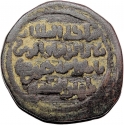You are about to finish your registration. Please check your mailbox (including spam folder). There should be a letter with a confirmation link. Check setting to make sure that your e-mail address is correct.
Send letter againDescription
The Kingdom of Georgia, also known as the Georgian Empire, was a medieval monarchy which emerged in circa 1008 AD. It reached its Golden Age of political and economic strength during the reign of King David IV and Queen Tamar the Great from 11th to 13th centuries. At the peak of its dominance, the kingdom's influence spanned from the south of modern-day Ukraine to the northern provinces of Iran, while also maintaining religious possessions in the Holy Land and Greece. A predominantly Christian, Georgian-speaking realm, it was the principal historical precursor of present-day Georgia.
Lasting for several centuries, the kingdom fell to the Mongol invasions in the 13th century, but managed to re-assert sovereignty by the 1340s. The following decades were marked by Black Death spread by the nomads, as well as numerous invasions under the leadership of Tamerlane, who devastated the country's economy, population, and urban centers. The Kingdom's geopolitical situation further worsened after the Fall of Constantinople, which effectively marked the end of the Eastern Roman Empire, Georgia's traditional ally. As a result of these processes, by the end of the 15th century Georgia turned into an isolated, fractured Christian enclave, surrounded by hostile Turco-Iranic neighbors. Renewed incursions from 1386 led to the final collapse of the kingdom into anarchy by 1466 and the mutual recognition of its constituent kingdoms of Kartli, Kakheti and Imereti as independent states between 1490 and 1493.
Obverse

|
A mysterious symbol representing a military standard or upright crossbow, acronym of “Tamar Davit’” to left and right. Paschal cycle date around. |
|---|---|
Reverse

|
Name and titles of Tamar in Arabic in four lines. ملكة الملكات |
| Edge | - |



